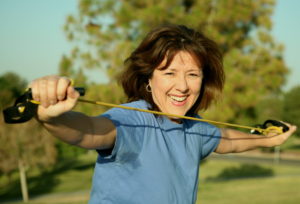What does osteoporosis look like to you?
Do you picture someone frail and elderly?
The progression of osteoporosis and the time to
start addressing the problem may be much
earlier than you think. In fact, the thinning
process of the bone that causes osteoporosis can
start as early as the mid 30’s.
Peak bone density generally peaks at about 35
years old. It then begins to steadily decline
unless you intentionally do something to stop it.
Osteoporosis is a disease characterized by thin
porous bones. It results in decreased bone
strength and a change in bone structure. The
result, a lessening ability of the bone to
withstand the forces of everyday life and
increasing risk of fractures.
Osteoporosis is a disease that can be “silent”.
There may be no outward symptoms of the
disease until a fracture occurs. However, we
do not want to wait to have a broken bone to
start addressing bone health.
In fact, no matter your age, now is the
time to start preventing bone loss!
There are some factors such as age and
genetics that we can not control in regards to
bone health. However, healthy bone is also
built and maintained through a healthy
lifestyle. This includes avoiding habits that
promote bone loss such as smoking and
excessive alcohol consumption.
Our lifestyle must include a diet adequate in
calcium, magnesium, and vitamin D. In many
individuals, supplementation is required to
reach adequate levels of these necessary
vitamins and minerals.
In addition, appropriate exercise is a
necessary component to bone building or
slowing bone loss. At any age, bone grows
when it is adequately and properly stressed.
This requires a mechanical load on the bone
that causes it to remodel.
What does this mean to you?
You need to be up on your feet and lifting
heavy things.
If you have been told you have, or are at high
risk for osteoporosis, going to physical therapy
is a proactive way to promote bone health.
A physical therapist can give you a custom
designed exercise program that will help
prevent falls and fractures. It is important
that those who already have thin bone have
an individualized bone building prescription
to ensure that they are neither over- or
under- exercising.
After looking at multiple studies, it was
reported that aerobic, weight bearing, and
resistance exercises all appear to be effective
in improving bone density of the spine.
Similar studies have looked at the effect of
exercise on wrist, ankle, and hip bone strength.
A comprehensive program strengthens each of
these bones and surrounding muscles. It will
also address balance, coordination, and
flexibility.
If you are still in the prevention phase of
osteoporosis, it is likely safe to begin an
exercise regimen on your own.
Here are 6 Bone Building Exercises.
Incorporate each of these so you get the most
bone building benefits from your time
investment.
1. Wall Push Ups
Stand about 2 feet away facing a wall, placing
hands shoulder distance apart, lower your
chest toward the wall and then push away.
2. Wall Squats
Stand with your back and shoulder flat against
a wall. Move your feet about 2 feet away from
the wall and slide your body down the wall into
a squat position.
3. Three Way Foot Taps
Stand on one foot, with support on a chair if
needed. Tap your other foot forward, to the
side laterally, and then behind you.
4. Back Extension
Lay on your stomach with a pillow under your
waist. Hold your hands out in front of you and
lift up into a “superman” position.
5. Hands and Knees Reaching
Get on the floor on your hands and knees.
Reach one arm out in front of you and
straighten out the opposite leg behind you.
Hold and then repeat with the other arm and
leg.
6. Bridge
On your back with knees bent, slowly pull in
your stomach muscles and lift your hips off the
floor. Hold and then slowly return to the floor.
If you need further assistance with these
exercises, progressing to more resistance, or
have pain with any of these movements, contact
us today to get you moving in the right direction.
Call the office at 901-316-5456 or e-mail me:
Don’t delay or wait until you “have a problem”.
Your mobility and independence depend on it!




